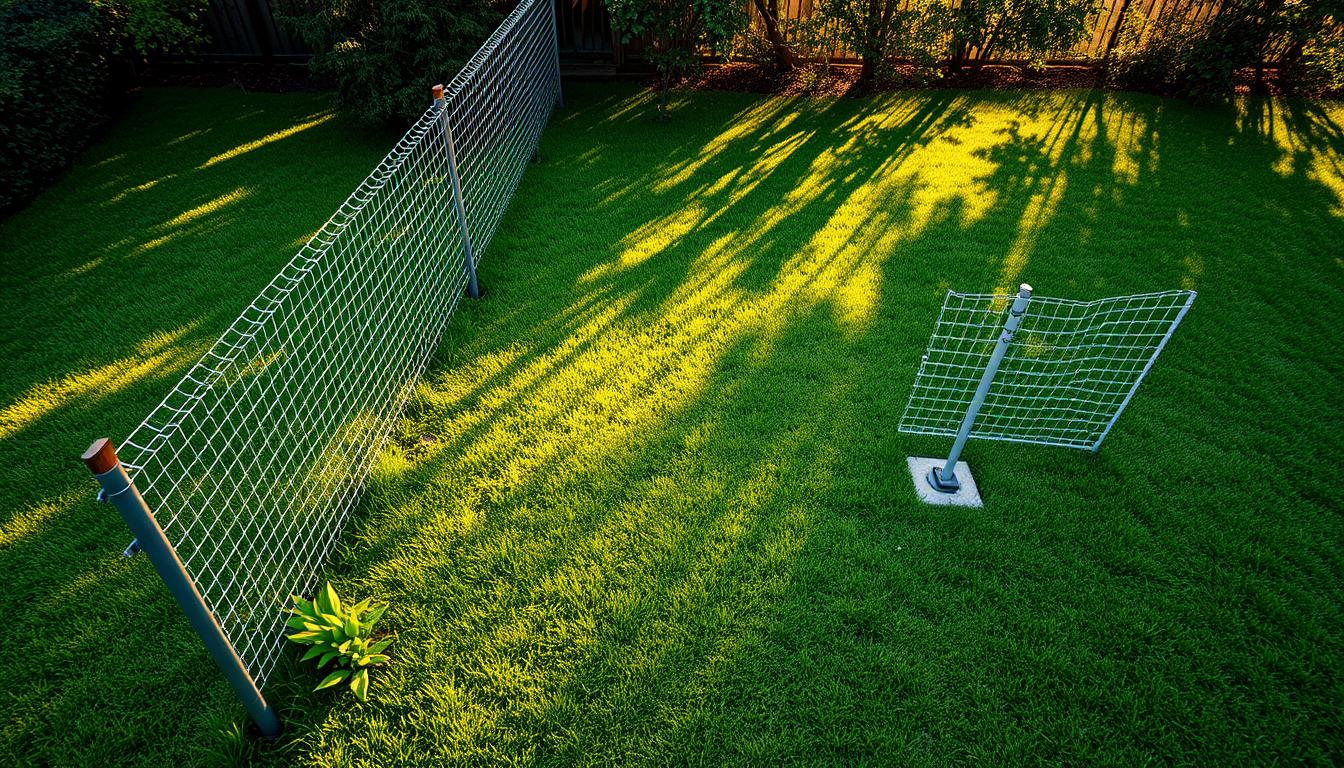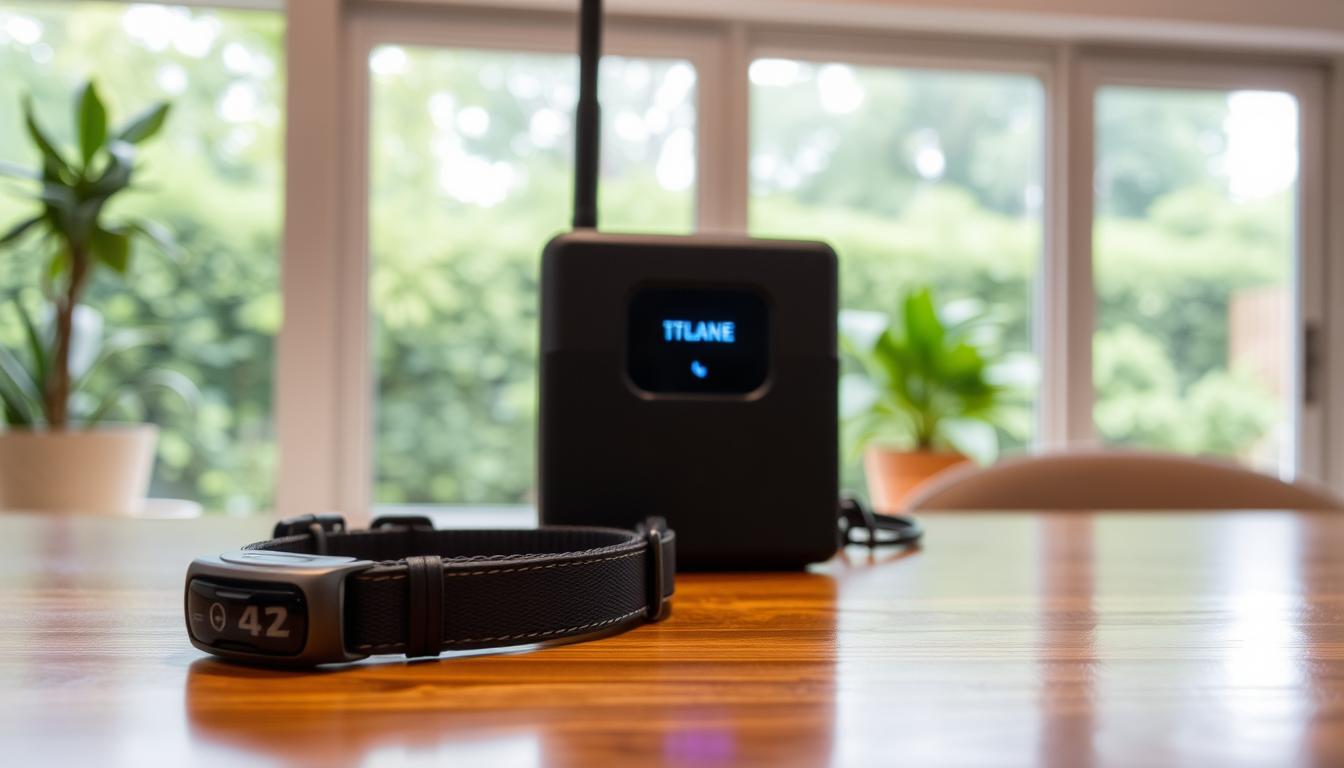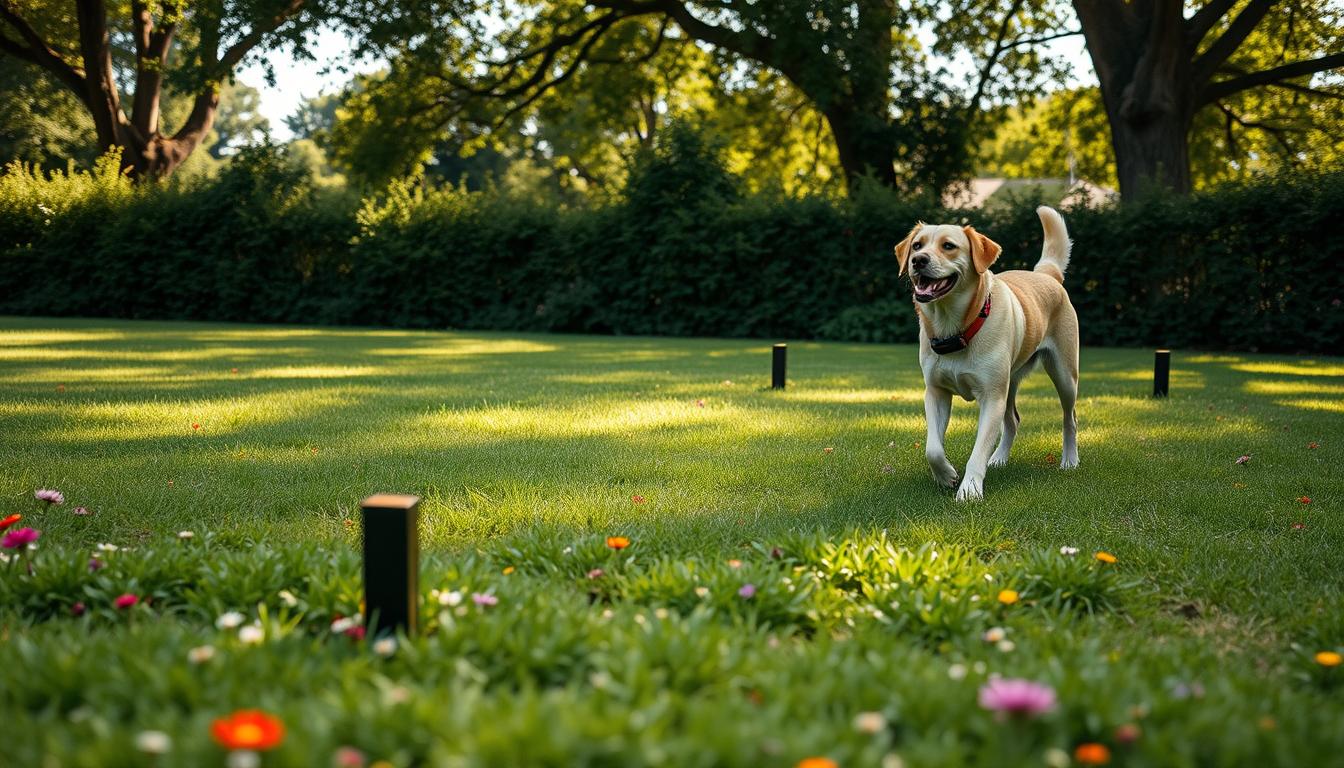When it comes to containing your pet within the safety of your property, choosing between wireless and traditional dog fences can be a daunting task. You need to consider several factors, including your dog’s temperament, your property’s layout, and the level of safety you wish to provide.
The decision between these two types of fences hinges on understanding how they work and their respective advantages and disadvantages. While traditional fences offer a physical barrier, wireless fences rely on a different technology to keep your dog within designated boundaries.
Establishing secure boundaries is crucial for your pet’s safety and preventing them from wandering off. The right choice can provide you with peace of mind while giving your dog the freedom to roam within the designated area.
Key Takeaways
- Understand the differences between wireless and traditional dog fences.
- Consider your dog’s temperament and your property’s layout.
- Learn about the technology behind different containment systems.
- Evaluate the long-term implications of your fencing choice.
- Assess the impact on your property’s aesthetics.
- Consider maintenance requirements and effectiveness.
Understanding Dog Fence Options
Ensuring your dog’s safety is a top priority, and one effective way to achieve this is by installing a reliable dog fence. Dogs are adventurous animals that can easily get lost if they wander off. A secure boundary ensures you and your pup never experience the fear of being separated.
The Importance of Secure Boundaries for Dogs
A secure boundary is crucial for keeping dogs safe and preventing them from getting lost or injured. It provides a safe environment for them to roam freely within the confines of your property.
Overview of Available Containment Systems
There are various containment systems available, including traditional physical fences, wireless systems, and wired underground options. Each type addresses different needs and property types, from urban to rural settings.
Key Considerations for Dog Owners
When evaluating fencing options, dog owners should consider factors such as property size, dog breed characteristics, and local regulations. The right containment system provides both freedom for your dog and peace of mind for you as an owner.
| Fence Type | Property Size | Dog Breed |
|---|---|---|
| Traditional Fences | Small to Large | All Breeds |
| Wireless Fences | Small to Medium | Most Breeds |
| Wired Underground Fences | Medium to Large | All Breeds |
By understanding the different dog fence options and their benefits, you can make an informed decision that suits your needs and ensures your dog‘s safety.
Traditional Dog Fences: How They Work
For dog owners, a traditional fence is a straightforward and effective containment solution. A traditional fence creates a physical barrier that confines your dog to a defined space, providing a safe and secure environment.
Types of Physical Fencing Materials
Various materials are used in traditional dog fences, including wood, vinyl, chain-link, and metal options. Each material has its strengths and weaknesses. For example, wood is aesthetically pleasing but may require more maintenance than vinyl or metal.

Installation Process for Traditional Fences
The installation process for traditional fencing involves several considerations, including terrain type and property boundaries. It’s essential to assess your yard’s layout to determine the best fencing solution.
Effectiveness and Security Features
Traditional fences are effective for containing dogs, especially when combined with additional security features. For dogs that dig or jump, features like dig guards and coyote rollers can enhance the fence’s security.
Analyzing the effectiveness of traditional fences for different dog breeds and temperaments is crucial. For instance, dogs that are prone to jumping may require taller fences or angled tops to prevent escape.
By understanding how traditional dog fences work and their various features, you can make an informed decision about the best fencing solution for your pet.
Wireless vs Traditional Fences: Understanding the Technology
To appreciate the effectiveness of wireless dog fences, it’s essential to understand the technology that powers them. Wireless dog fence systems function using a transmitter and receiver, creating an invisible boundary without the need for a physical wired fence.
How Wireless Dog Fence Systems Function
There are primarily two types of wireless dog fences: GPS-enabled wireless fences and radio frequency wireless fences. GPS-enabled fences utilize satellite technology to determine the precise location of your dog and establish a virtual boundary. On the other hand, radio frequency wireless fences operate by using a central transmitter to generate a radio signal, creating a circular or adjustable boundary. Your dog wears a receiver collar that detects the signal, and when they near the boundary, the collar produces warning signals.
GPS vs. Radio Frequency Technologies
GPS-based systems offer flexible boundary options that can be adjusted or transported easily, making them ideal for various environments. In contrast, radio frequency systems are generally more straightforward and less dependent on satellite signals. While GPS technology provides precise location tracking, radio frequency systems are often more affordable and simpler to set up.
Installation and Setup Requirements
The installation and setup process for wireless dog fence systems are relatively simple compared to traditional fencing. You need to place the transmitter in a suitable location, adjust the boundary settings, and ensure your dog wears the receiver collar correctly. Modern wireless systems have evolved to provide more consistent coverage and fewer false corrections than earlier models, making them a reliable choice for pet owners.
It’s also important to consider how terrain, obstacles, and electronic interference can affect wireless fence performance and reliability. Understanding these factors will help you optimize the system’s effectiveness and ensure your dog’s safety.
Comparing Benefits and Drawbacks
As a dog owner, comparing the benefits and limitations of wireless and traditional fences will help you choose the most suitable containment solution for your pet. Both types of fencing systems have their unique advantages and disadvantages, which are crucial to understanding when making an informed decision.
Advantages of Traditional Fencing
Traditional fencing offers several benefits, including a physical barrier that prevents your dog from escaping and keeps unwanted visitors out. This type of fencing also provides a clear visual deterrent, which can be effective in preventing intruders. Moreover, traditional fences require minimal training for your dog to understand their boundaries, making them a convenient option.
Key benefits of traditional fencing:
- Physical barrier protection
- Visual deterrence
- Minimal training requirements
Advantages of Wireless Systems
Wireless dog fences, on the other hand, offer ease of installation and flexibility. They do not obstruct visibility, preserving the aesthetic appeal of your property. Additionally, wireless systems are portable, making them ideal for dog owners who move frequently or have temporary fencing needs.
Key benefits of wireless systems:
- Aesthetic preservation
- Easy installation
- Flexibility and portability

Limitations and Challenges of Both Options
While both traditional and wireless fencing systems have their advantages, they also come with their own set of limitations. Traditional fences can be costly to install and may require significant maintenance, whereas wireless systems are dependent on battery life and can be affected by signal inconsistency.
| Fencing Type | Advantages | Limitations |
|---|---|---|
| Traditional Fences | Physical barrier, visual deterrence, minimal training | Installation challenges, visual obstruction, fixed boundaries |
| Wireless Systems | Aesthetic preservation, easy installation, flexibility | Battery dependence, signal inconsistency, training requirements |
Understanding these factors will help you make a more informed decision when choosing between wireless and traditional dog fences. By weighing the pros and cons of each option, you can select the best fencing solution that meets your dog’s needs and your personal preferences.
Factors to Consider When Choosing Your Dog Fence
To ensure your dog’s safety and happiness, it’s essential to consider several critical factors when choosing between different dog fencing options. The right decision will depend on a variety of elements related to your property, your dog, and your personal preferences.
Property Size and Layout Considerations
The size and shape of your property play a significant role in determining the most suitable dog fence. Wireless dog fence systems are often more suitable for properties with regular shapes, while traditional fences may be better for irregularly shaped properties or those with many obstacles.

Dog Size, Breed, and Temperament
Your dog’s size, breed characteristics, and temperament are crucial factors. For instance, dogs with strong prey drives or escape tendencies may require more secure containment systems, such as traditional fencing or advanced wireless systems with robust training features.
Budget and Long-term Maintenance
Both the initial installation cost and long-term maintenance expenses should be considered. Traditional fences may have higher upfront costs but can last longer, while wireless systems might be cheaper initially but may require more maintenance, such as battery replacements.
| Fence Type | Initial Cost | Maintenance Cost | Longevity |
|---|---|---|---|
| Traditional Fence | High | Low | Long-lasting |
| Wireless Fence | Low-Moderate | Moderate | Variable |
Aesthetic Preferences and HOA Restrictions
Aesthetic considerations and potential homeowners association (HOA) restrictions can also influence your decision. Traditional fences come in various styles and materials, but some may not be allowed by HOAs. Wireless fences, being invisible, do not affect your property’s appearance.
By carefully evaluating these factors, you can choose a dog fence that not only ensures your pet’s safety but also fits your lifestyle and property requirements.
Conclusion: Making the Right Choice for Your Pet
Choosing the right dog fence is a personal decision that depends on various factors, including your dog’s behavior and your property’s layout. The key is to find a balance between your dog’s freedom and safety. When deciding between a wireless dog fence and a traditional fence, consider your specific needs and circumstances.
If you prioritize flexibility, affordability, and a minimal visual impact, a wireless dog fence might be the better choice. On the other hand, if safety, durability, and no training requirements are paramount, traditional fencing may be the way to go.
Some pet owners may benefit from combining approaches, such as using a traditional fence for the perimeter and a wireless system for additional boundaries within the property. Regardless of the system you choose, proper training is crucial to ensure your dog understands and respects the boundaries. Consulting with professional installers or trainers can also help you make an informed decision.
By considering your long-term plans and your dog’s specific needs, you can find the perfect containment solution that works for both you and your pet.
FAQ
How do GPS containment systems work for my pet?
GPS containment systems use GPS signals to determine your pet’s location and keep them within a set boundary. These systems often require a collar that receives the GPS signal and provides feedback to your pet.
Are wireless dog fences safe for my pet?
When used correctly, containment systems can be a safe solution for keeping your pet within your yard. The collar worn by your pet will typically emit a warning signal before administering a correction, helping to prevent your pet from escaping.
Can I use a shock collar on my pet?
While some containment systems use a shock collar, it’s essential to consider your pet’s temperament and size before choosing this option. Some alternatives, like the Halo Collar, offer a more humane approach to training.
How do I choose between a wired dog fence and a wireless dog fence?
When deciding between a wired dog fence and a wireless dog fence, consider factors like your property’s size and layout, your pet’s size and breed, and your budget. Wired dog fences require installation, while wireless dog fences are often easier to set up.
What are the advantages of using a GPS wireless dog fence?
GPS wireless dog fences offer flexibility and ease of use, allowing you to set boundaries without the need for physical installation. They can also be more adaptable to changing yard layouts or temporary fencing needs.
How do I ensure my containment system is working correctly?
Regularly check your containment system’s battery level, ensure the collar is fitting properly, and test the system’s boundaries to ensure they’re working as intended.
Can I use a containment system for multiple pets?
Many containment systems can be used for multiple pets, but you’ll need to purchase additional collars for each pet. Be sure to check the system’s compatibility and any limitations on the number of pets it can support.





